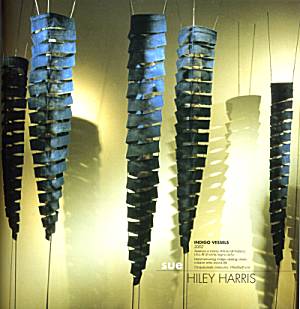| |
Conditions
of participation
Participation in the 4th Biennial in Chieri was
subject to the following criteria: the works had to be
developed and produced by the artists themselves. Series
products were not admissible. The objects had to consist
of materials for traditional or experimental weaving.
However, mixed and other techniques were also admitted.
With regard to size, only a width of 2m was prescribed.
Moreover, works that had been made before the year 2000
were not admitted.Textile materials and techniques
For a long time, the basic material of textiles, the
fibers, were supplied by the vegetable and animal
kingdoms. The best-known among them are cotton, flax,
hemp, silk, or the wool of sheep, goats, llamas and
camels.
Today, the number of textile fibers – particularly
of those used in textile art – appears to have
increased almost without limit. Apart from all the
chemical fibers, use has been found for fibers that are
unusual, virtually "alien". These include hot
glue, glass fibers, tree bark, twigs, indeed even barbed
wire.
Textile techniques, too, have
multiplied. Traditional methods from all eras and
cultures are combined, placed in new contexts, and
expanded by means of unconventional experimental
possibilities.
|
